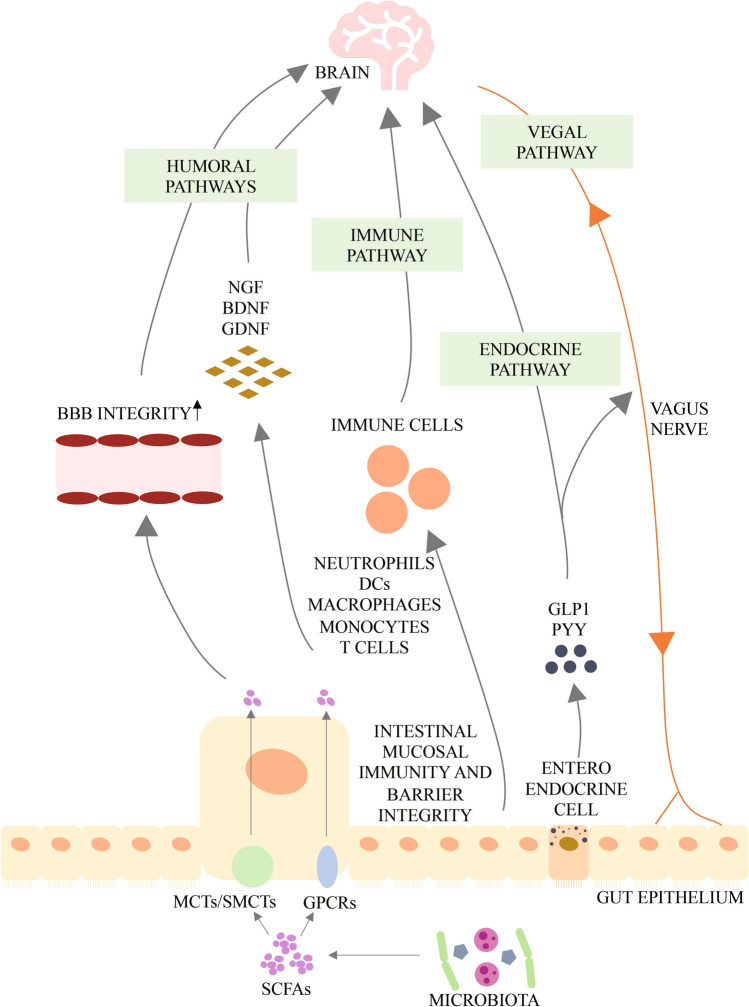Fig. 2.
Potential pathways through which short chain fatty acids (SCFAs) modulate brain function. After production by gut microbiota, SCFAs are absorbed by colonocytes and any accessible cell through H+-dependent monocarboxylate transporters (MCTs) or sodium-dependent monocarboxylate transporters (SMCTs), or through binding to G protein coupled receptors (GPCRs) such as free fatty acid receptor 2 and 3 (FFAR2 and FFAR3), the GPCR109A and GPCR164. Intracellular SCFAs can inhibit the activity of histone deacetylases, preventing deacetylation of histones and leading to more transcriptionally active chromatin; or they can increase the activity of histone acetyltransferases, resulting in acetylation of histones and gene expression. SCFAs influence the communication between gut and brain, as well as brain function, either directly or indirectly via humoral, immune, endocrine and vagal pathways. Via the humoral route, SCFAs can cross the barrier or blood-brain barriers (BBB) via MCTs located on endothelial cells and influence BBB integrity by upregulating the expression of tight junction proteins. They can also modulate neurotrophic factors, such as nerve growth factor (NGF), brain-derived neurotrophic factor (BDNF), and glial cell line-derived neurotrophic factor (GDNF), and thus regulate the central nervous system and peripheral nervous system. Via the immune route, SCFAs can influence intestinal mucosal immunity by activating FFARs or by inhibiting deacetylation of histones. SCFAs can also enhance intestinal barrier integrity by upregulating the expression of tight junction proteins and augmenting transepithelial electrical resistance. In addition, SCFAs can regulate neutrophils, dendritic cells (DCs), macrophages and monocytes, and T cells, and thus maintain homeostasis. Via the endocrine route, SCFAs can interact with their receptors on enteroendocrine cells to induce the secretion of gut hormones such as glucagon-like peptide 1 (GLP1) and peptide YY (PYY), thus promoting indirect signaling to the brain via the systemic circulation or vagal pathways. SCFAs can also promote direct signaling to the brain via the vagal route. [90, 99]

